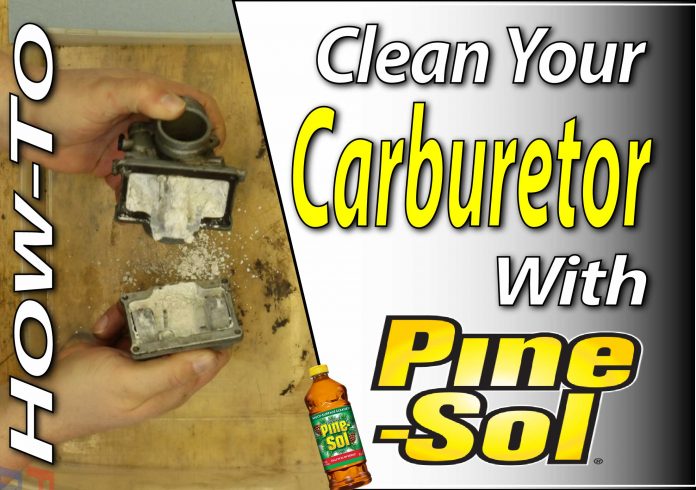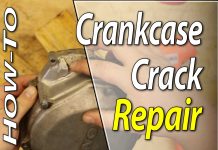Deep Clean Your Carburetor With A Soak In Pine-Sol
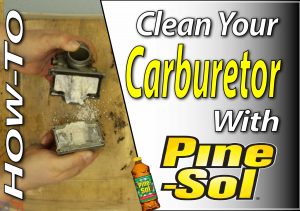 Soaking your Carburetor In Pine-Sol is a cheap alternative to Chem-dip. We know Berrymans Chem-Dip works for heavy cleaning jobs, but it also costs around $30 gallon, and if all you are doing is cleaning the varnish out your carburetor, it’s extreme overkill.
Soaking your Carburetor In Pine-Sol is a cheap alternative to Chem-dip. We know Berrymans Chem-Dip works for heavy cleaning jobs, but it also costs around $30 gallon, and if all you are doing is cleaning the varnish out your carburetor, it’s extreme overkill.
Right off the top, there are two things to know when cleaning your carb with pine-sol.
1. Soaking takes at least a day, and up to two if your carb is really gummed up, so plan accordingly.
2. Soak your carb is a sealed container away from your workspace. As you’ll see in this video, I am using open containers to show what’s happening to the carbs. My shop is filled with a thick lemon scent, and my eyes are burning. LEARN FROM ME!
Carburetor Prep
- Start by completely disassembling your carburetor. Pine-Sol will eat rubber and plastic, so make sure you remove the bowl gasket and float valve.
- You will only need to soak the carburetor body, so set everything else aside.
- Get your carburetor body as clean as possible before you soak it in Pine-Sol.
- If you soak your carb straight from the bike, you run the risk of contaminants floating around and clogging your circuits, which would defeat the whole purpose of the soak.
- The soak is meant to clean the varnish and buildup from the internal circuits, not a one-shot cleaning solution.
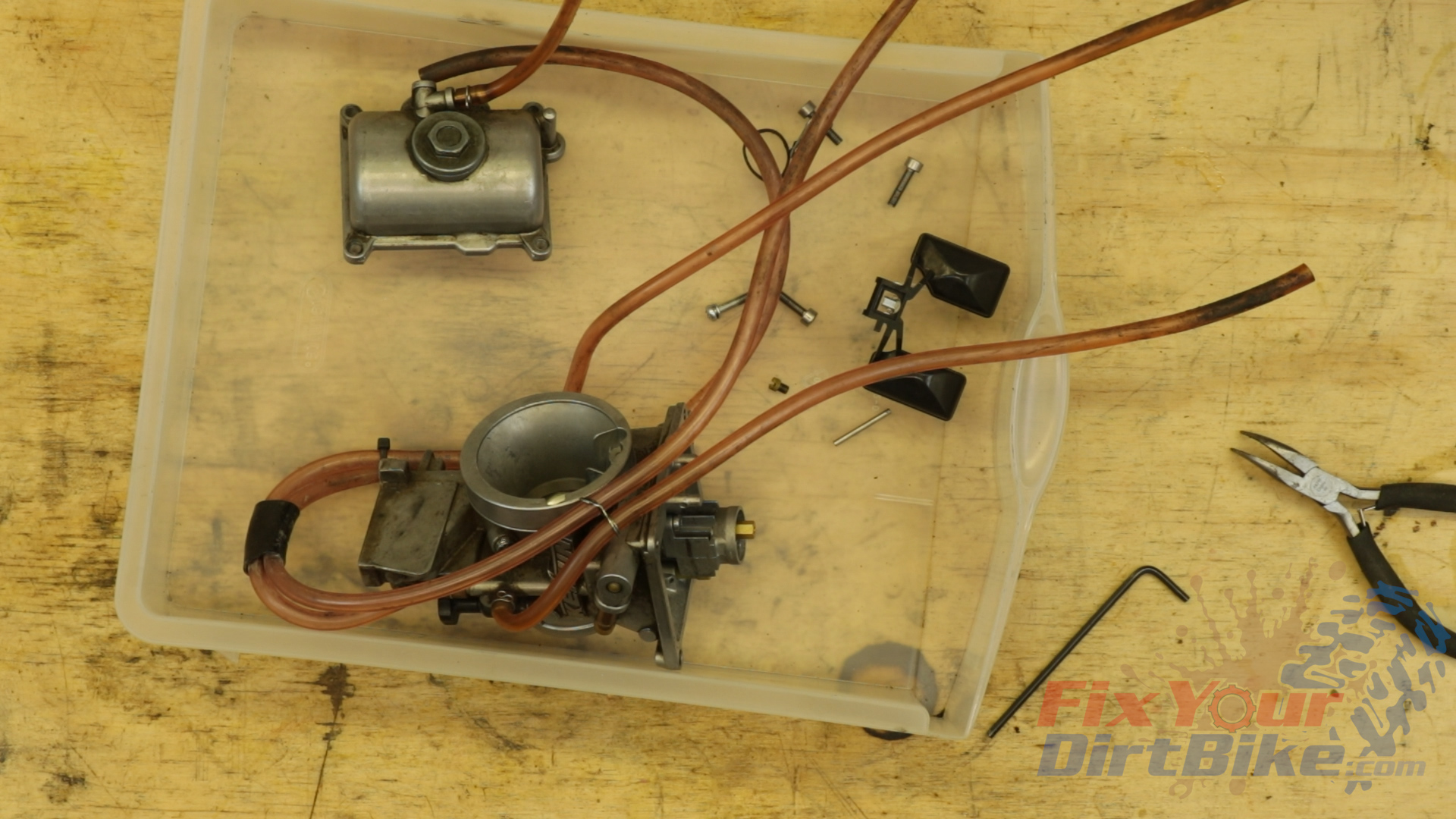
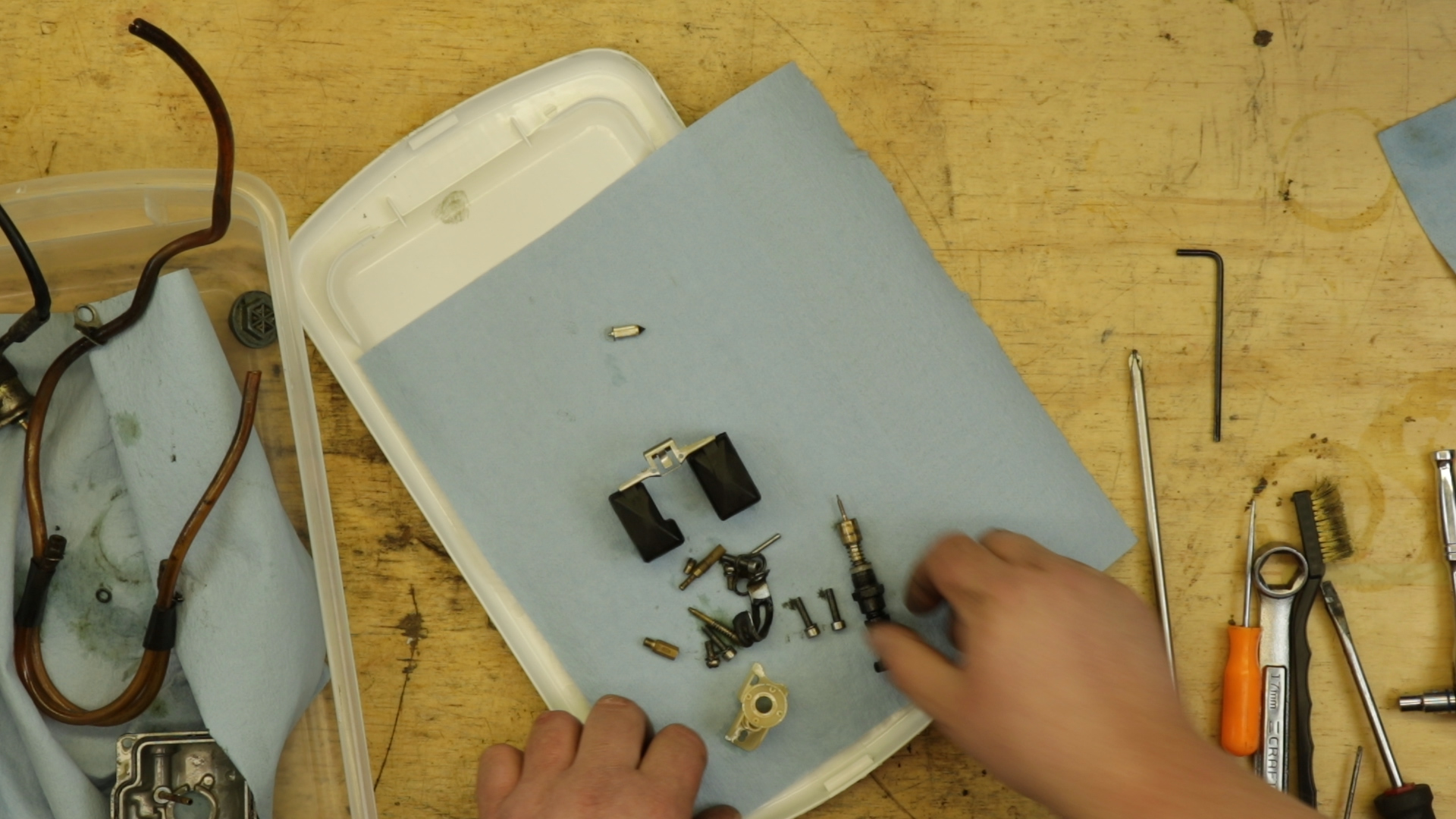 I am cleaning three carburetors with different degrees of blockage.
I am cleaning three carburetors with different degrees of blockage.
The first carb is off my KTM 300 XC-W 2-stroke that I recently swapped for a Lectron self-adjusting carburetor. This carb will not be going back on that bike, but I do have plans for it.
The second carb is another 2-stroke off my 1997 Honda CR250. As you can see, it has a bit of varnish build-up on the idle circuit intake. If you can see varnish on the outside, you can bet it’s gummed up on the inside. This varnish is a typical result of letting fuel sit in the carb for a few months.
The third carb is an extreme case. This carburetor came off a drowned ATV that the previous owner never bothered fixing. I don’t know how long ago exactly, but long enough to get this.
This ATV carb is extremely corroded, and I wanted to see just how far pine sol would go, but I wasn’t expecting much. Surprisingly, I was able to disassemble everything except the slow jet and float valve.
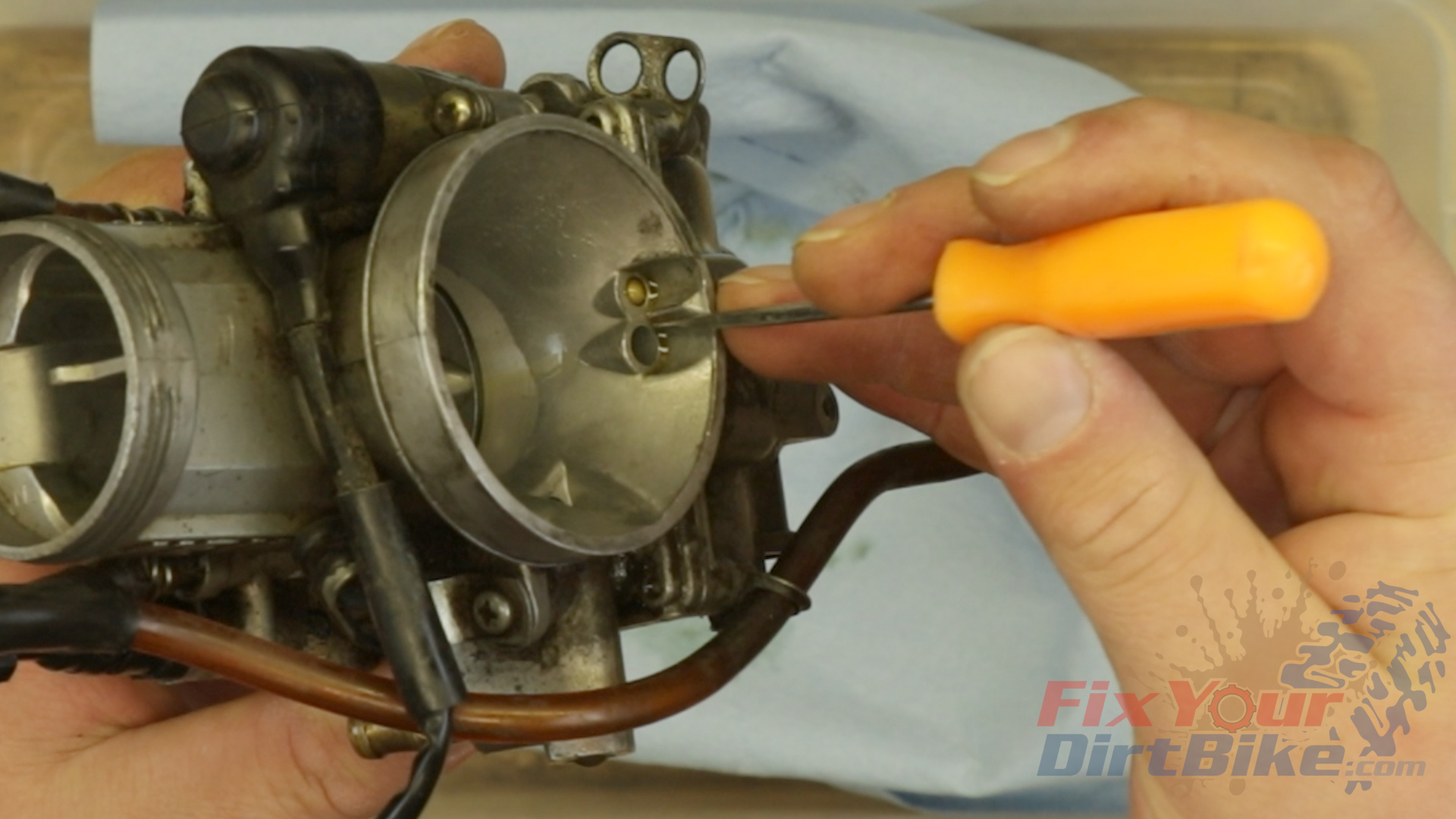
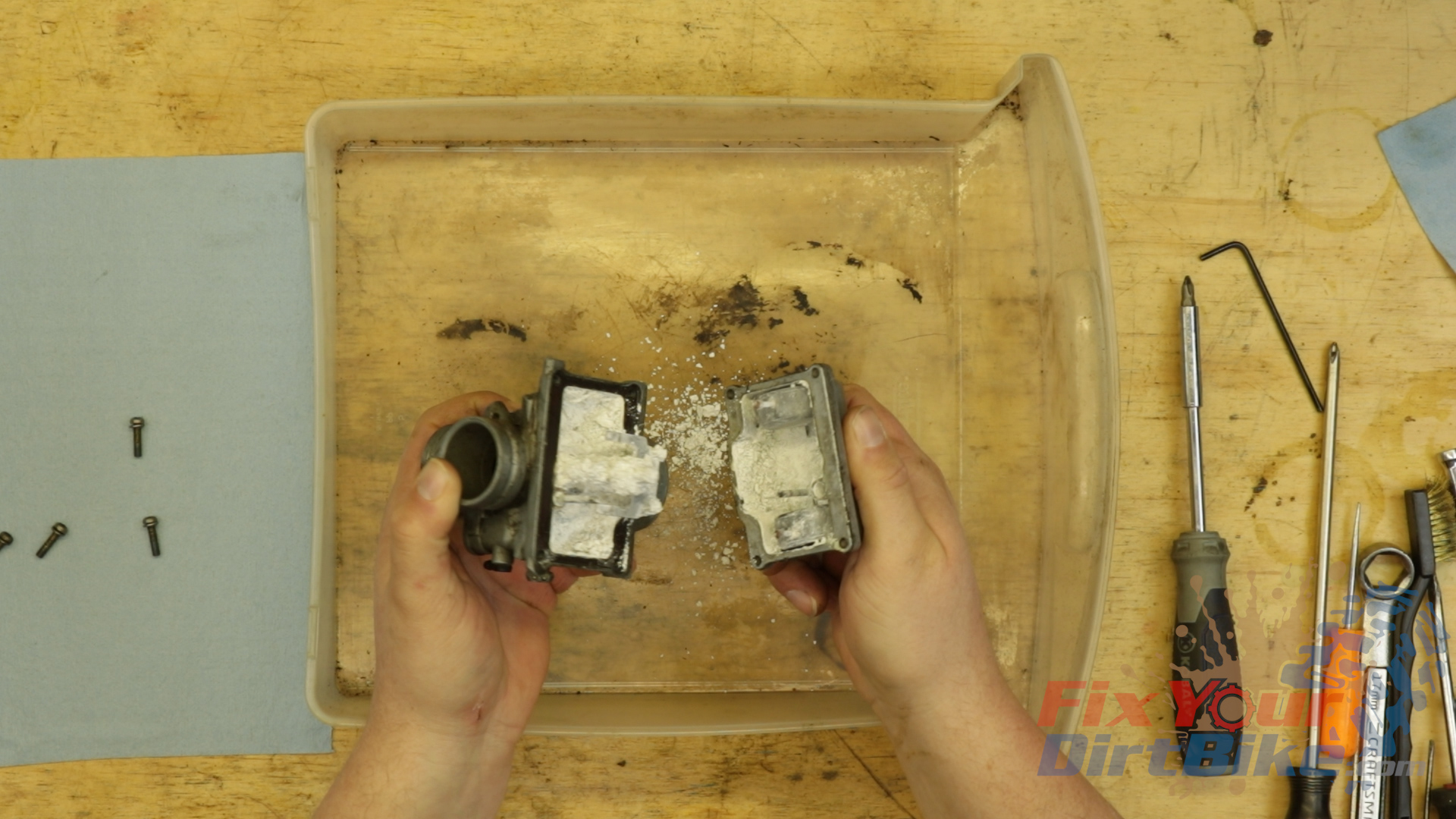
Related: Does fuel with high alcohol content make more power?
Soak Your Carburetor In Pine-Sol
You will need a soak bucket, a rinse bucket, compressed air, and WD40. Soak you carb for 24 to 48 hours. Every 12 hours or so, pull your carb, let it drain, and replace it in a different position. 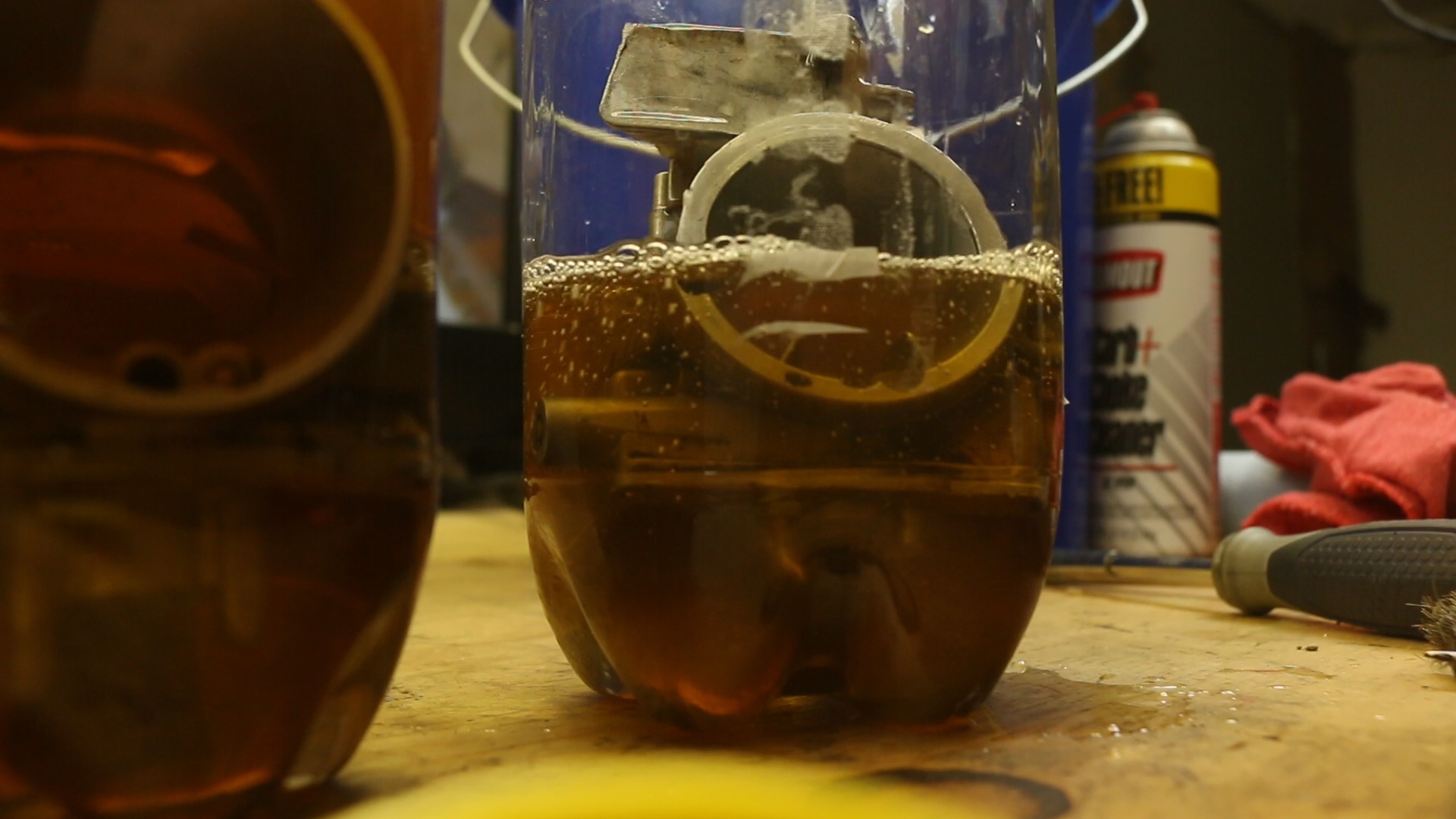
Why Does Pine-Sol Work?
You’re probably wondering why a household cleaner works for cleaning carbs.
Well, it isn’t as harmless as it seems. If you look at the Materials Safety Datasheet for both Pine-Sol and Chem-Dip, you will find both products use similar active ingredients, but in different concentrations.
Rinse And Inspect
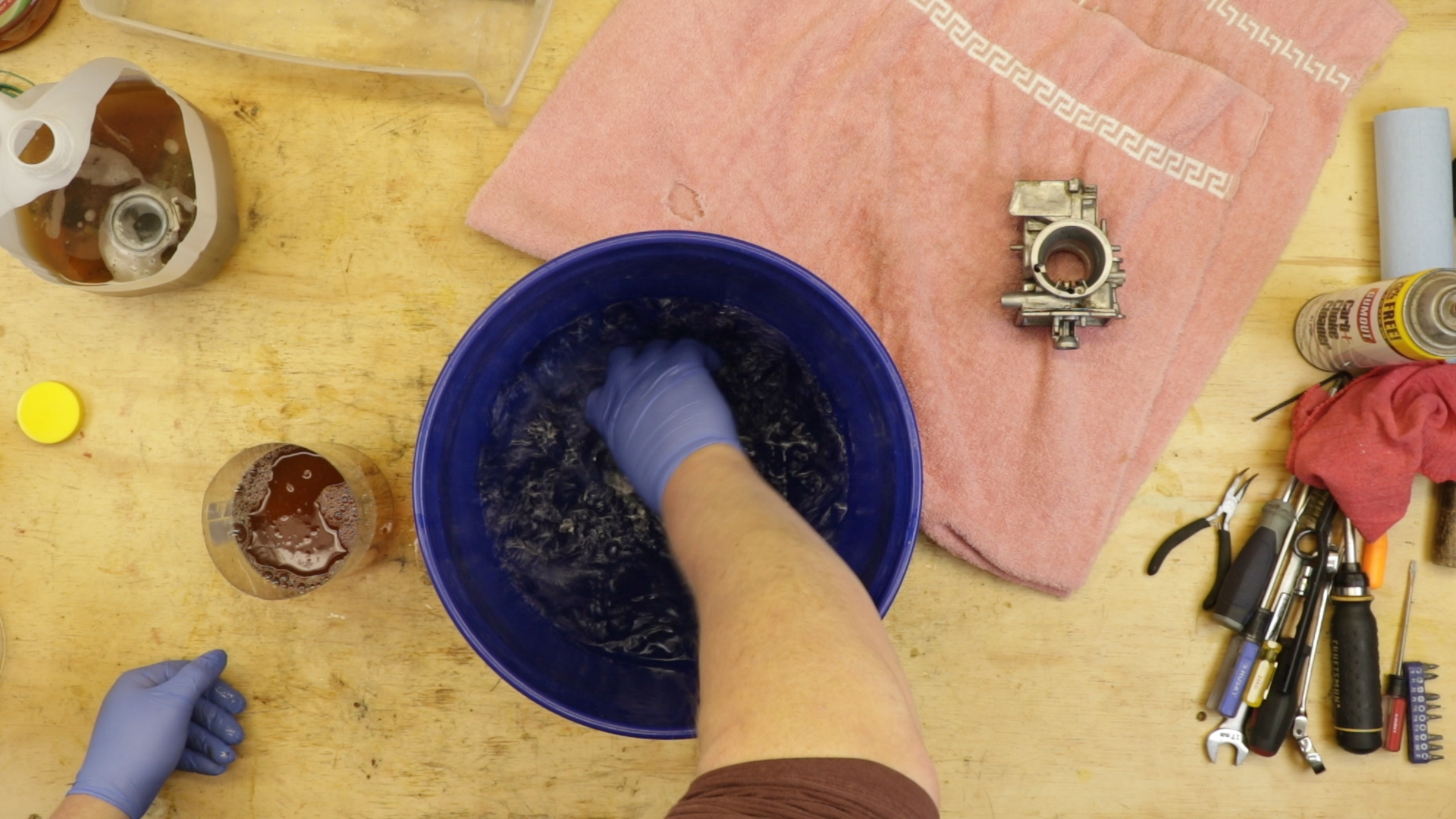
Pull your carburetor and rinse thoroughly in water. Aggressively agitate your carb in every direction to clear as much pine-sol as you can.
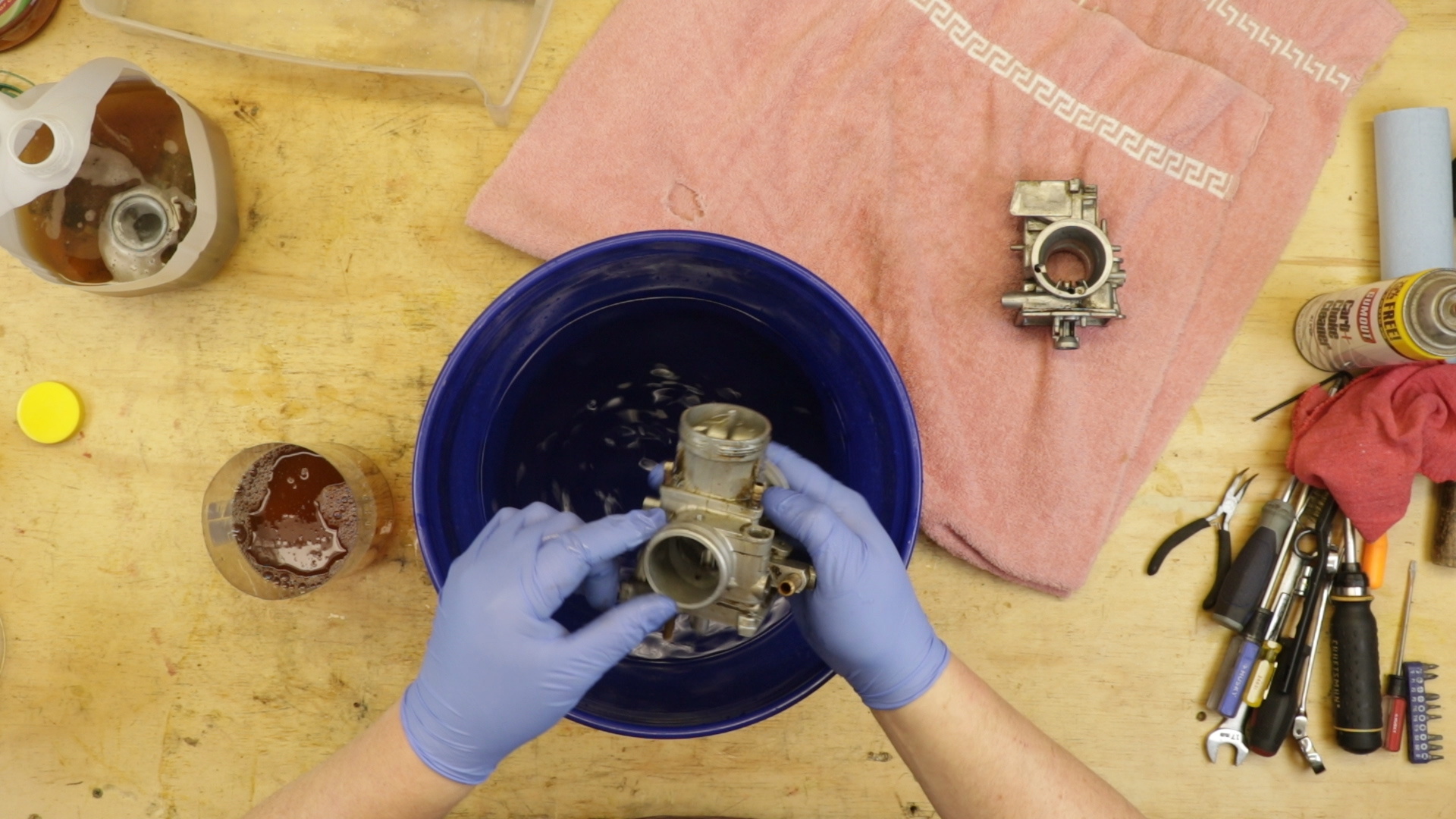
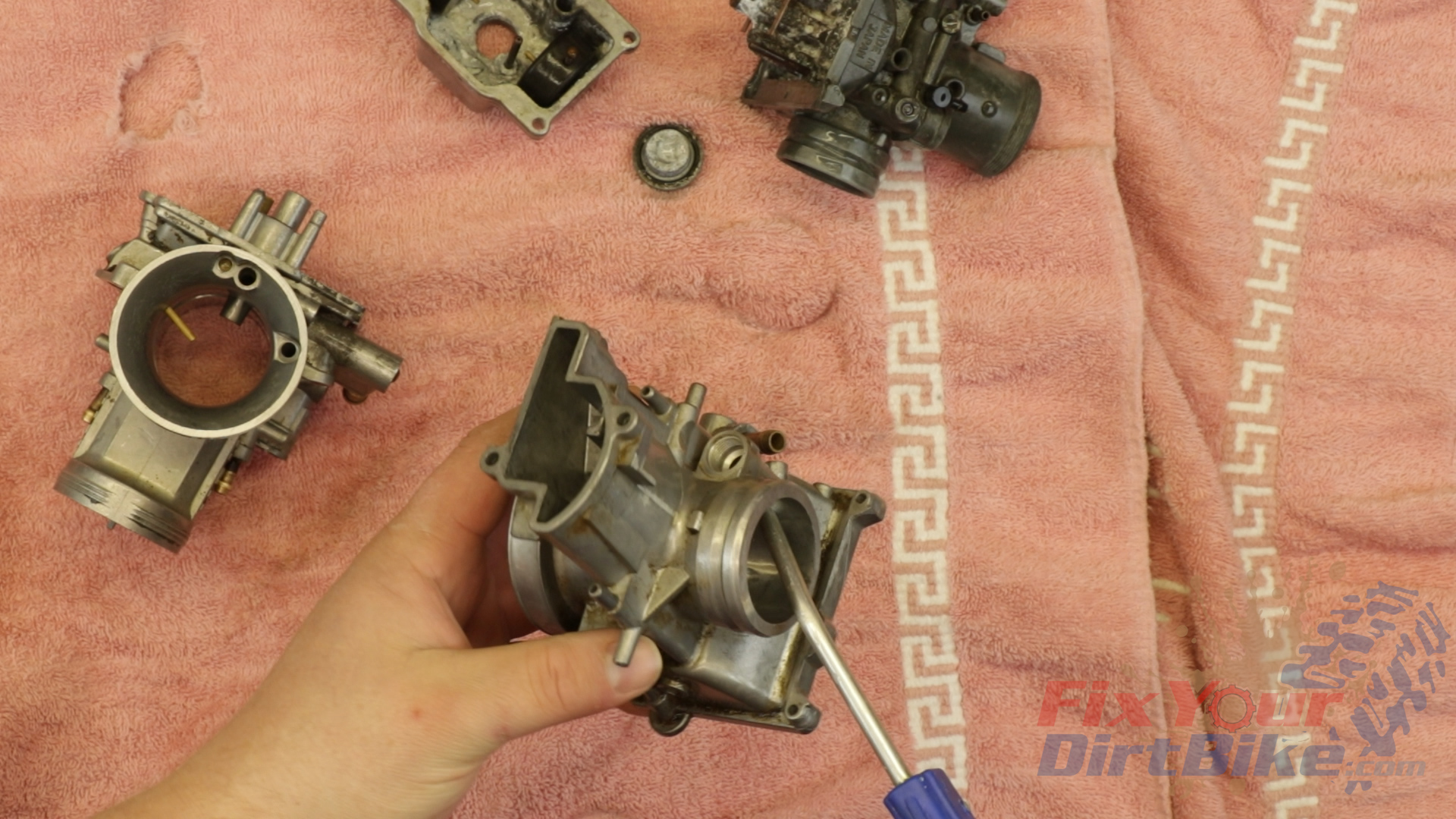
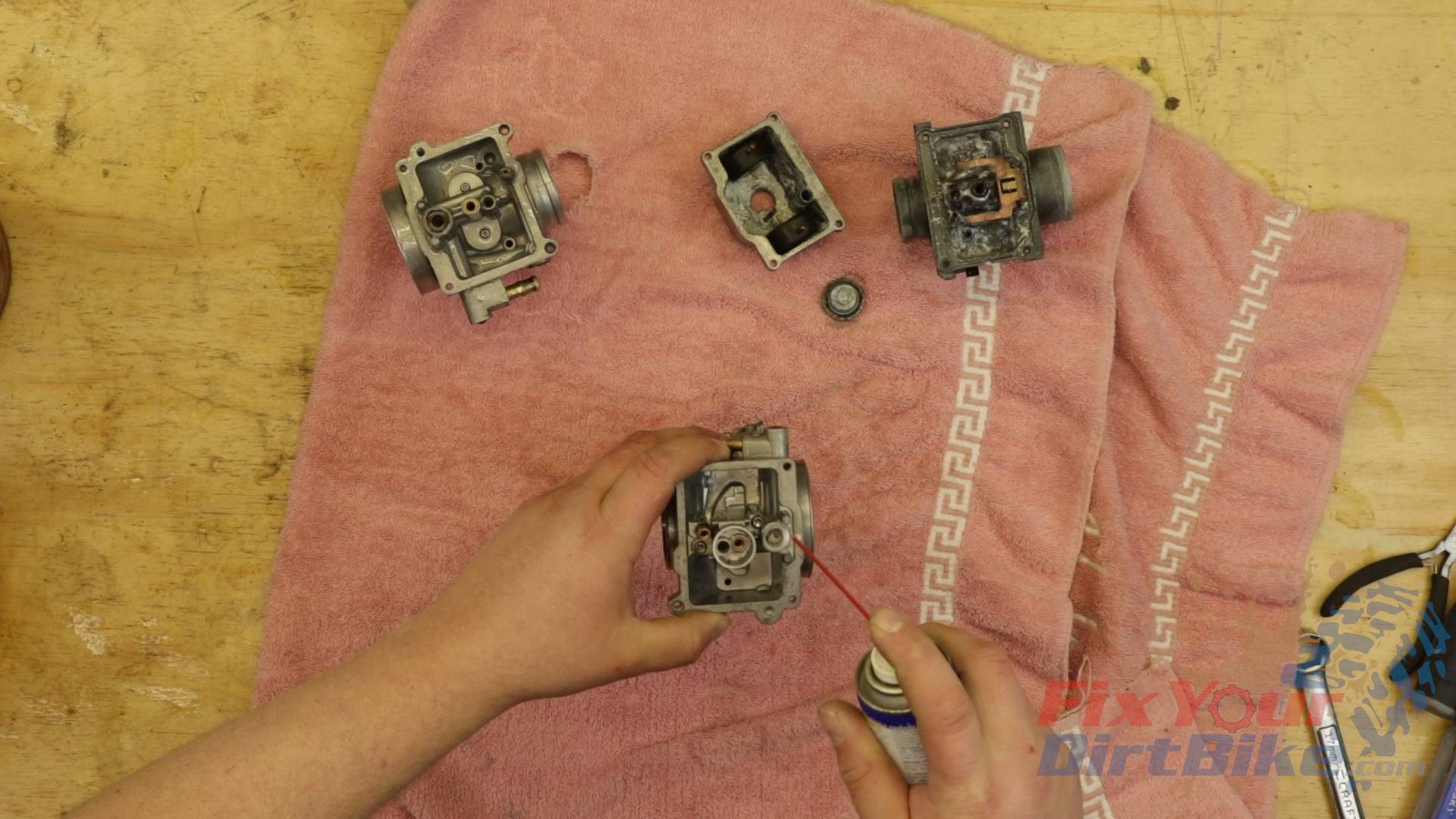
Now, you never want to use water to clean your carb, but this is an exception. With your carb rinsed, blow compressed air through every hole you can see from both directions. Once your carb is dry, hit the internals with WD40 to make sure the circuits are entirely voided of water.
Related: How to install your innertube with red rubber grease.
Soaking Results
You can get a good idea of how well the soak worked, or at least how dirty your carb was, by looking at the used Pine-Sol.
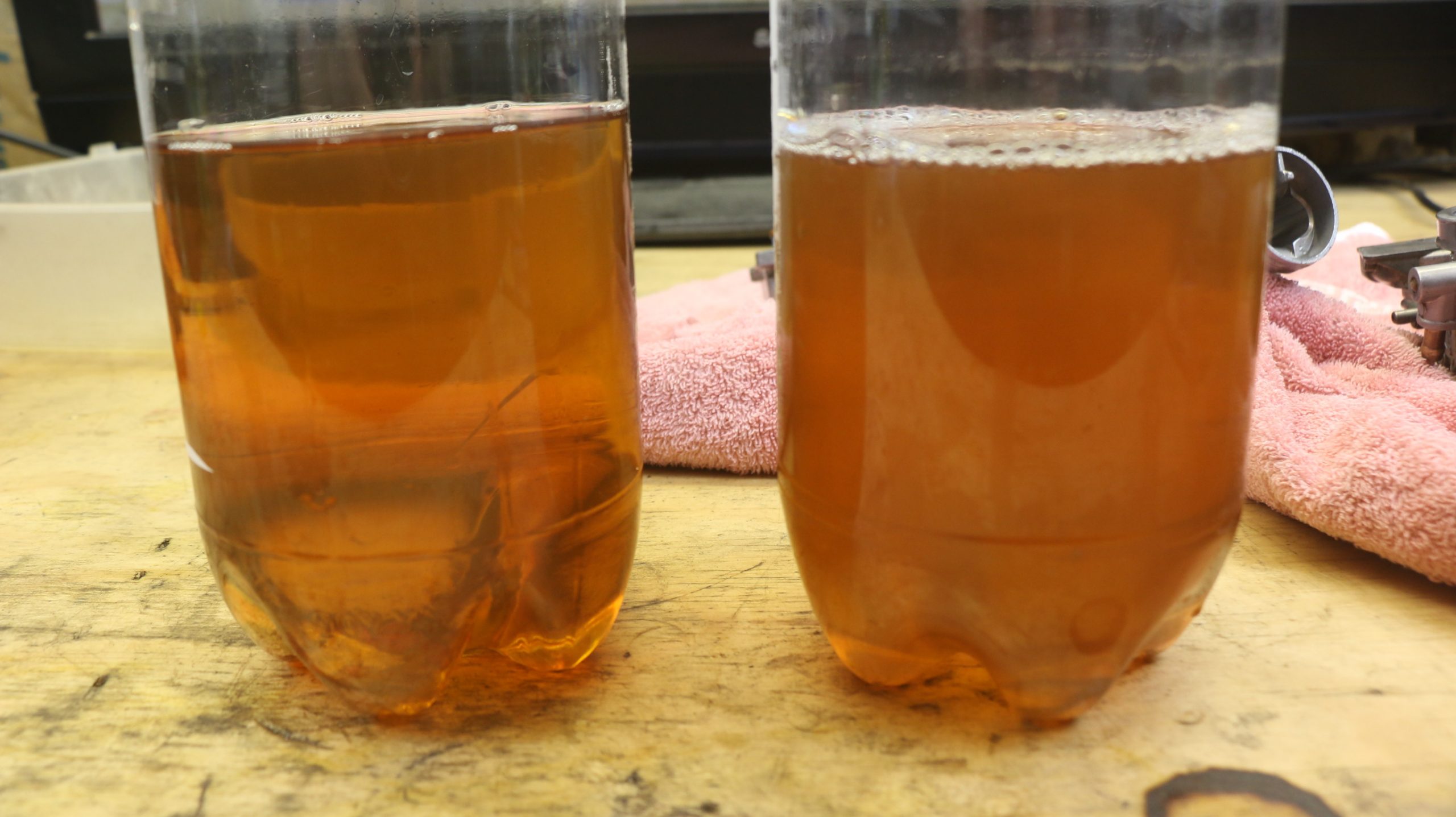
The left container had my KTM carb, and the right had my CR250 carb. You can see the CR250 carb was pretty dirty, and the pine-sol did its job.
As for the ATV carb, well, that’s a lost cause.
Judging by the weight, this is a cast metal carb, so the white corrosion was white rust, which is what happens when zinc is exposed to hydrogen and oxygen. The exposure to H2O creates zinc oxide, which eats away at the metal as it forms. So the pine-sol didn’t do much to remove it.
I still might try to resurrect this carb as a challenge, but I’d need to do some serious work.

